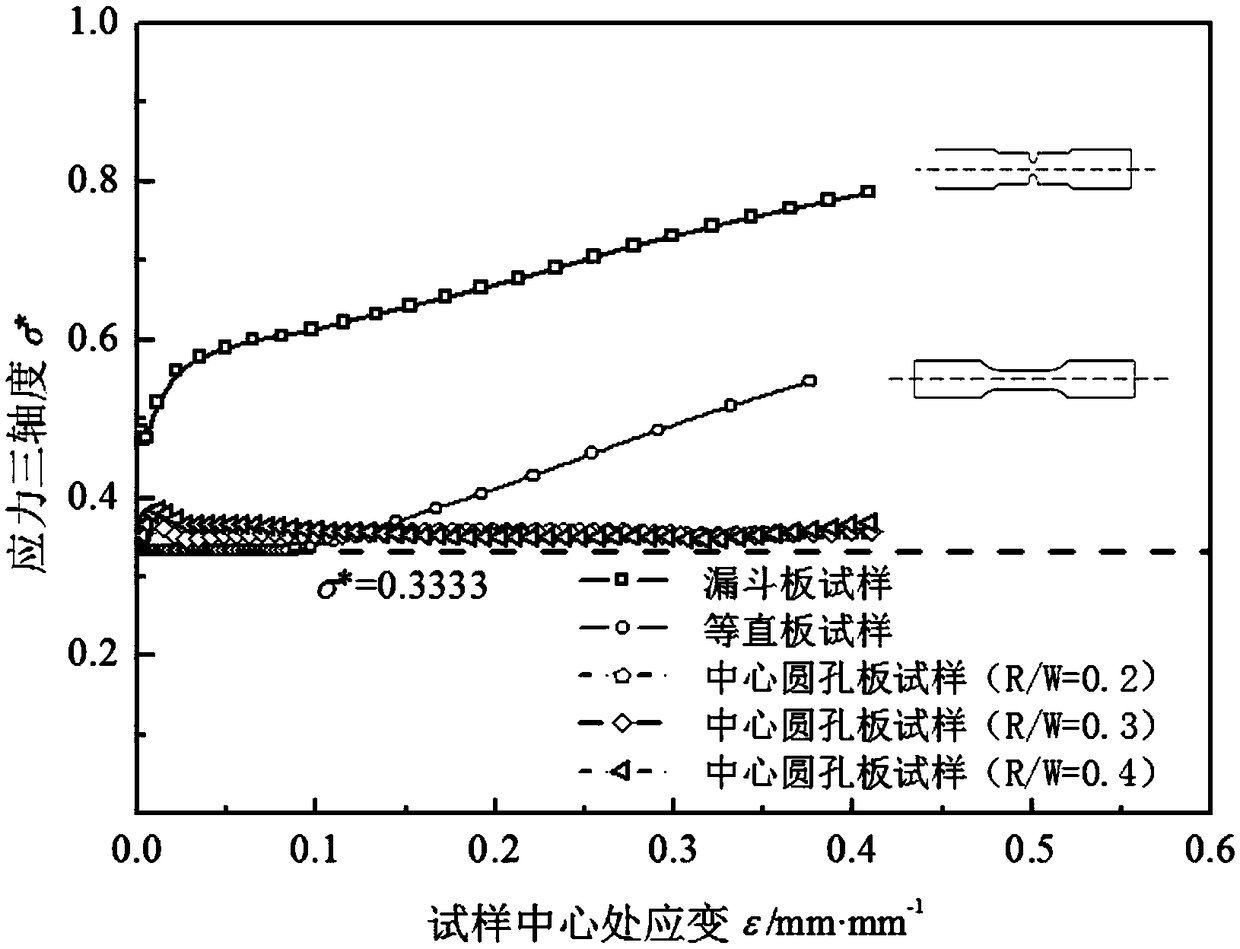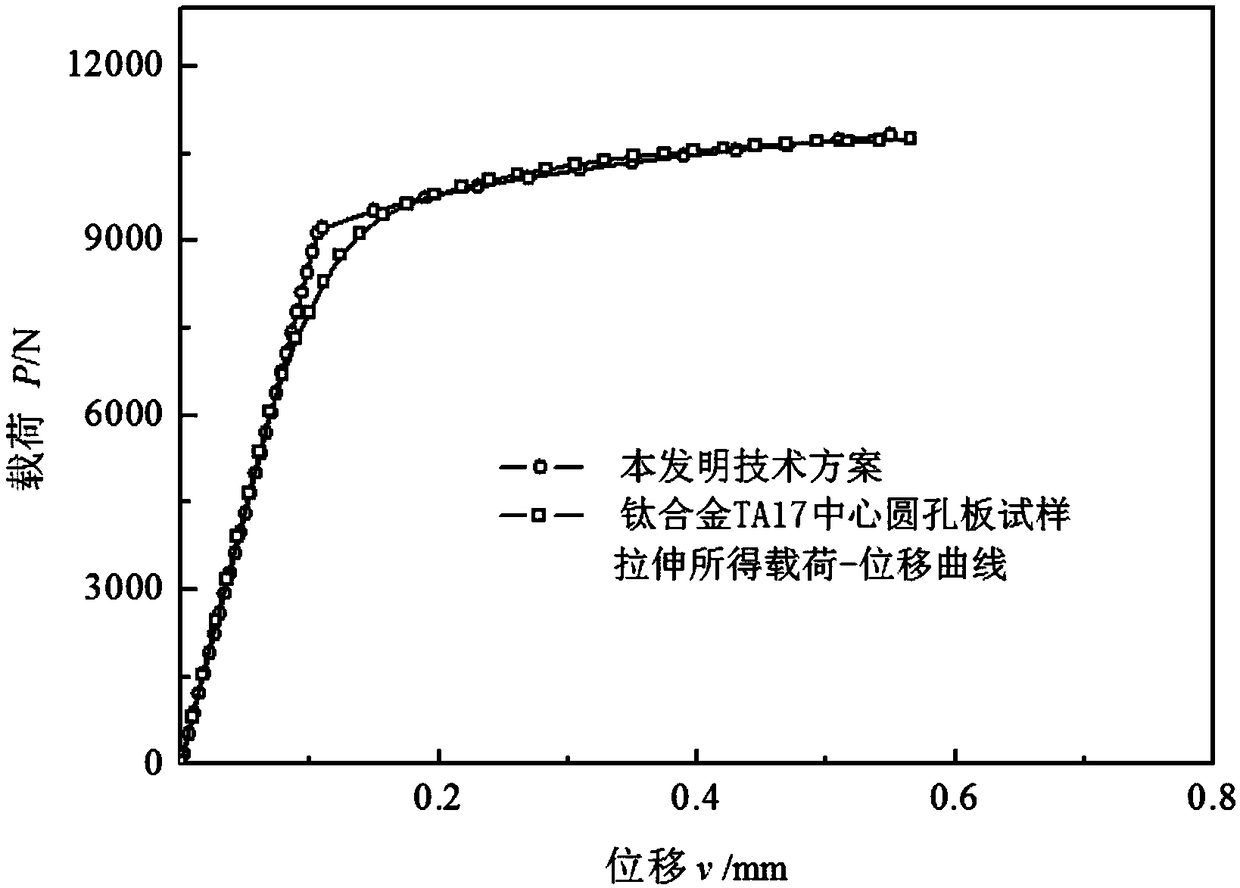A test method for uniaxial constitutive relation of ductile materials
A technology of constitutive relation and ductile material, which is applied in the direction of analyzing materials, using stable tension/pressure to test material strength, measuring devices, etc., can solve the problems of engineering stress drop and the inability to truly obtain the material stress-strain relationship, etc., to achieve The effect of avoiding severe effects, simple and easy method, and wide range of constitutive relations
- Summary
- Abstract
- Description
- Claims
- Application Information
AI Technical Summary
Problems solved by technology
Method used
Image
Examples
Embodiment Construction
[0029] The present invention will be further described below in conjunction with the accompanying drawings and specific embodiments.
[0030] A method for testing the uniaxial constitutive relationship of ductile materials, comprising the following steps:
[0031] Through the quasi-static tensile test, the relationship between the continuous load P and the displacement V of the material sample is obtained. The sample is a central circular hole plate sample, and the P-V curve satisfies the following relationship:
[0032]
[0033] In the formula: R sample hole radius, S is the elastic stiffness, P* is the characteristic load, m is the displacement index, V y is the yield displacement of the sample;
[0034] Obtain the constitutive relation parameters of the material according to S, P* and m, including elastic modulus E, nominal yield stress σ y and the strain hardening exponent n, the critical fracture stress σ is obtained by finite element simulation f and the critical f...
PUM
| Property | Measurement | Unit |
|---|---|---|
| width | aaaaa | aaaaa |
| thickness | aaaaa | aaaaa |
Abstract
Description
Claims
Application Information
 Login to View More
Login to View More - R&D
- Intellectual Property
- Life Sciences
- Materials
- Tech Scout
- Unparalleled Data Quality
- Higher Quality Content
- 60% Fewer Hallucinations
Browse by: Latest US Patents, China's latest patents, Technical Efficacy Thesaurus, Application Domain, Technology Topic, Popular Technical Reports.
© 2025 PatSnap. All rights reserved.Legal|Privacy policy|Modern Slavery Act Transparency Statement|Sitemap|About US| Contact US: help@patsnap.com



